 Jason Day Holes Another Winning Putt Jason Day Holes Another Winning Putt How do top professional golfers like Jason Day and Jordan Spieth make the decisive putts, and hit the pivotal shots when needed to win the big championships, and yet other golfers in similar situations collapse under the pressure of the moment? Do these great golfers possess a special mental toughness gene that allows them to hit great shots when it counts? Maybe they come from disadvantaged backgrounds, like in boxing, where many of the toughest and most successful fighters in history came out of poor city neighborhoods, with little money to their name, and just a burning desire to change their situation? No, it turns out that great golfers like Jason Day and Jordan Spieth historically have come from both sides of the railroad tracks. So the mental toughness factors that elevate their performances on the golf course appear to be accessible to all golfers, regardless of their background. 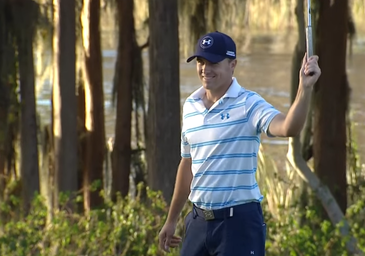 Jordan Spieth Exemplifies the Pro Tour Tough Persona Jordan Spieth Exemplifies the Pro Tour Tough Persona So let’s explore this topic and take a look at some of the mental toughness habits they and other successful tour golfers seem to possess, and also what types of skills they work harder on to make them less likely to falter down the stretch. 6 Habits of Pro Tour Tough Golfers Being mentally tough enough, or what we describe at Pro Tour Golf College as ‘Pro Tour Tough’ describes elite golfers who we have found possess these 6 habits;
And we have also discovered that it’s this big WHY that makes these Pro Tour Tough golfers push their game harder for longer, because they know that the only road to improvement is accepting that success in golf requires unceasing persistence in the face of adversity. “It doesn’t matter how skilled you are, or how hard you train, if you aren’t tough enough, you won’t win. It’s the reason a lot of fighters who have success at the Olympics can’t replicate it when they go pro – they just aren’t tough enough.” 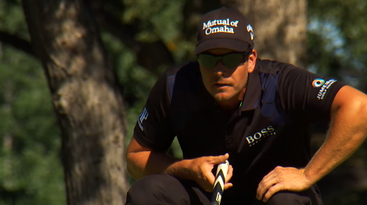 Henrik Stenson is One of the Toughest Competitors on Tour Henrik Stenson is One of the Toughest Competitors on Tour Pro Tour Tough Golfers Have Better C Game Days Pro Tour Tour golfers have developed a high level of trust and confidence in their shot-making that permits them to cope better than other golfers with the numerous stresses, burdens and trials that makes hitting golf shots in tournaments more difficult to do. Pro Tour Tough golfers perform better than other golfers on the tough days because they have highly developed and effective scrambling skills. All golfers have bad tee to green days, in fact out of every 4 tournament rounds it's possible that 2 rounds out of 4 are tough scoring rounds and great golfers have the best back-up skills on the tough days, and this helps them to maintain a lower C game score average in tournaments. Your C Game is Your Achilles Heel Think about this for a moment; many of the hundreds of amateur and professional golfers who enter tour schools each year are definitely good enough on their day to play on a pro tour, if they could compete with their A and B Game—their best game score average. However playing on the pro tour is not about how good you are on a given day, but how good you are over multiple days. If you play 6 rounds of tour school and 50 percent of those rounds are your C game--or high score average, could you still get a good card? The answer in most cases is nine out of 10 golfers pursuing a pro career fail mostly because their C Game just isn’t good enough. As I mentioned, your C Game is your high score average—the score you have when you are playing poorly. The reality of top level golf is that you will have bad days, and it's on these days that you have to have a great back-up game to keep your score average down. In baseball great pitchers don't just have a fast ball, they have a variety of pitches to help them win games, and you need a great back-up game with a wide variety of shots to help you to score lower, make more cuts and make cheques. Do you know what your C Game average was for last season?... 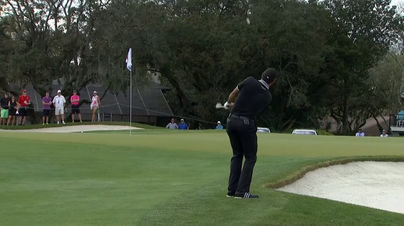 When Your C Game Average is Too High Your C Game average results from the days when you struggle with your shot-making from tee to green and you make less pars than average, and more bogeys or worse compared to birdies or better. For professional golfers missing too many cuts, it is having too many scores above 74. That doesn’t mean that the best golfers don’t score above 74, they do, but not very often. Let me give you an example. In the 2015 season on the PGA Tour Jason Day competed in 20 tournaments and made the cut in 18 of them. In 72 stroke rounds he scored 74 and above just 6 times, or just 8.3 percent for the season. On the other side of the coin, 46 of his rounds out of 72 were in the 60’s, which is 58.3 percent of his rounds. It's also interesting to note that Jordan Spieth scored 74 and above just 8 times in 88 rounds in 2015. Click on the image below and you will see from the 76 rounds in the table (Includes The Open Championship) that most of Jason Day's scores (Orange line) are below the blue line which describes the par of the courses he played over the season. Birdie to Bogey Ratio - The Key to Identifying C Game Problems Jason Day lead the statistical category Birdie to Bogey Ratio in 2015. This statistic describes the total number of birdies or better a golfer produces over a season divided by the total number of bogeys or worse they produce. Jason Day's Birdie to Bogey Ratio - 351 Birdies or Better divided by 157 Bogeys or Worse for 75 Rounds = 2.24 Also take note that Jordan Spieth ranked 2nd in this important but rarely discussed category. Jordan Spieth's Birdie to Bogey Ratio - 407 Birdies or Better divided by 208 Bogeys or Worse for 91 Rounds = 1.96 You will discover that the Birdie to Bogey Ratio will have real meaning and relevance if you are struggling to make cuts. Analyse your last 10 rounds of golf and calculate your Birdie to Bogey Ratio so you can identify whether you are making enough Birdies and Pars against Bogeys and Worse. We have noticed that the best golfers keep their C Game or high score average down because they make at least 12 pars per round, and they produce more birdies and better than bogeys and worse. And this is how they do it... 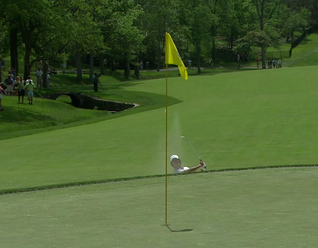 Don't Underestimate Your Scrambling Powers to Lower Your C Game Average How do you lower your bogey and worse average so you can make more pars and birdies? One of the main ways you do this is by developing your scrambling skills within 30 yards of the hole. By upgrading your scrambling skills you will give yourself a much better chance of keeping your C Game or high score average down to where you start making more cuts and more cheques. What is Scrambling? The scrambling statistic from 20 to 30 yards (18m to 27.5m) of the hole on the PGA Tour describes the percentage of times a tour golfer misses a green in regulation but still manages to produce a par or better. This is achieved with chipping, pitching and sand skills, combined with short putting within 15 feet of the hole. It probably wouldn't surprise you that in this category Jordan Spieth and Jason Day ranked in the top 5 in the scrambling from 20 to 30 yards of the hole, and what's even more interesting is they also ranked 1 and 2 respectively in the most important statistical category for a professional golfer, Money Leaders. Their scrambling skills around the green combined with their excellent putting skills helped them both to win 5 times, and between them earn more than 21 million dollars on the golf course for the 2015 season. Scrambling is a statistic that matters, and a set of skills to be practiced--especially for professional golfers struggling to make cuts. Scrambling ability is your par saving ability, and it is the set of skills you will rely on the most--especially when you are not hitting the ball from tee to green to your expectations, (which will be more often than you probably think). If you want to be a better and tougher competitor on the golf course on your bad days, then do yourself a favor and improve your scrambling ability. 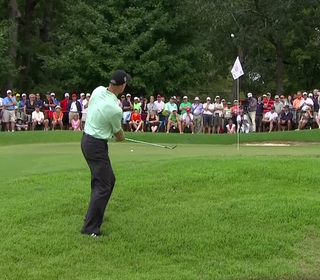 How to Practice Scrambling If you want to push your competitive score average down over a season so you can make more cuts and more cheques then practice your scrambling skills a lot more often. Practice using random style practice rather than block style by spending more time practicing from all types of challenging lies within 30 yards of the hole, such as from long grass, side hills, bare lies, and from all types of situations in the sand as well. Jason Day and Jordan Spieth rank very high in this scrambling category because they and their coaches know that this is the area that keeps you in the game on the tough days--especially down the stretch. Sharpen Your Skills with a Par 20 Scrambling Tournament Instead of hitting 10 shots from one location when you practice your short-game (which is common), hit one shot from 10 different locations around the green and strive to get your ball as close to the hole as you can. Place some coins, ball markers or tees around the hole with a radius of 7 feet (2 Metres), and take note of how many of your shots out of each set of 10 finish inside the circle. Now putt each shot out with tournament level intensity, and take note of what score you produce against a par of 20. Par for each hole is 2 so achieving par for 10 holes would produce a score of 20. Tour golfers we have tested in this game will produce 6 or more pars out of 10. The key to practicing this game is to hit a combination of chip, pitch, lob and sand shots. Also we have a rule that you should not place the ball for each shot, but drop the ball as if taking a penalty, and then play it from its lie. To be successful on a major professional tour you would typically be scoring 60 to 80 percent when playing this game over 50 holes (5 rounds). Our students at Pro Tour Golf College use a scorecard similar to the one below to keep track of their progress. You should practice this game often and work closely with your golf instructor to improve the individual skills that will enhance your scrambling ability. 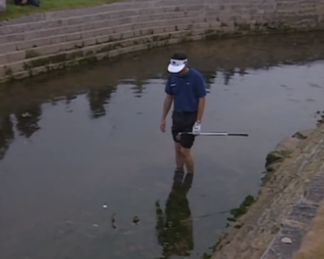 The Chip, Pitch, Lob and Sand Shot Are Your Scrambling Tools for Saving Par Since golf is a high mistakes game, the real art of the game is in your ability to manage the inevitable execution, mental and strategy errors you will make better than the next golfer. No two golf shots you hit are ever going to be the same, so most of the time the golf shots you hit won’t end up where you expected them to. Consequently, to lower your C Game, or high score average, you must continually upgrade your chipping, pitching, sand and putting skills. The most successful pros like Jason Day and Jordan Spieth do this, and you should too. So the key question that you need to ask yourself right now is this; “are you currently practicing and developing your scrambling skills enough to help you yield lower C Game scores? If you are not practicing these skills enough, then why? If it's good enough for the best players in the game to practice them often, then why not you. Being Pro Tour Tough is not about possessing some mental toughness gene but rather it's having the ability to keep your score down when you are not playing anywhere near your best. This is the big WHY that will help you to pressure proof your game so you can play your best on your worst days. Lawrie Montague and David Milne - Pro Tour Golf College
Pro Tour Golf College www.protourgolfcollege.com Perth / Jakarta Comments are closed.
|
Archives
June 2019
|
Proudly Supported By
Copyright © 2011 - 2018 Pro Tour Golf College
Website Managed By Golf Performance Media
All Rights Reserved
Website Managed By Golf Performance Media
All Rights Reserved

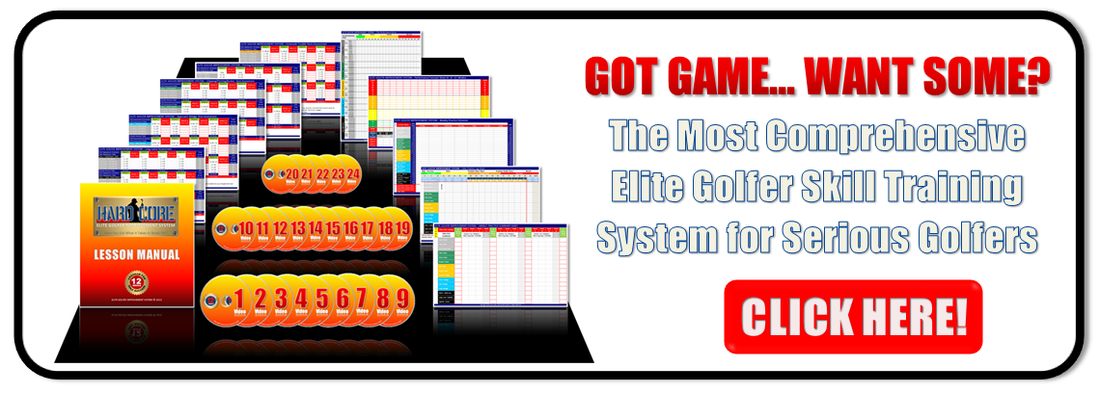


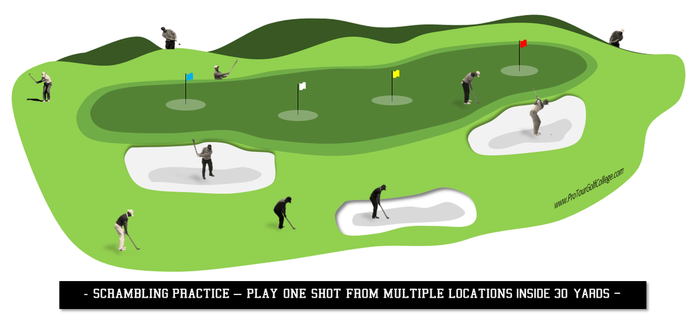
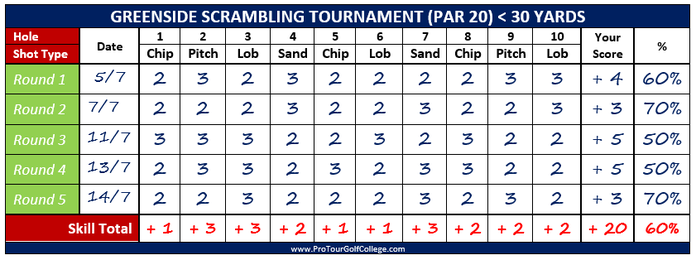
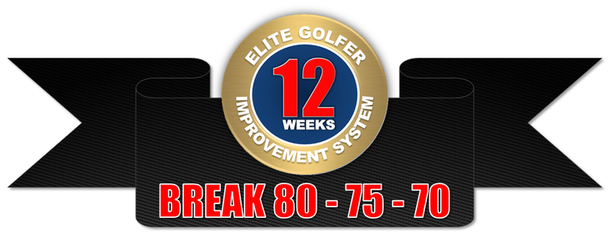
 RSS Feed
RSS Feed



